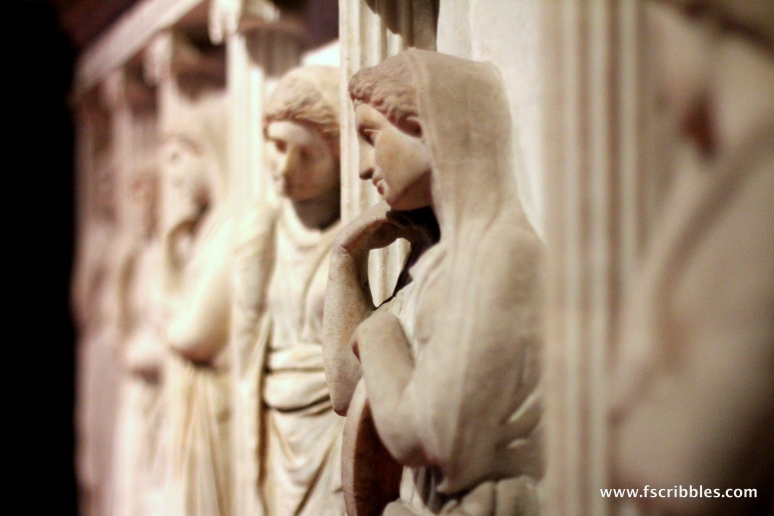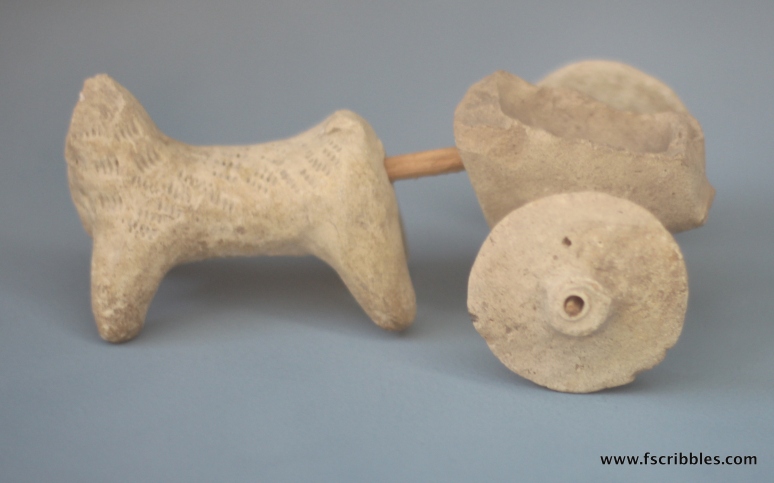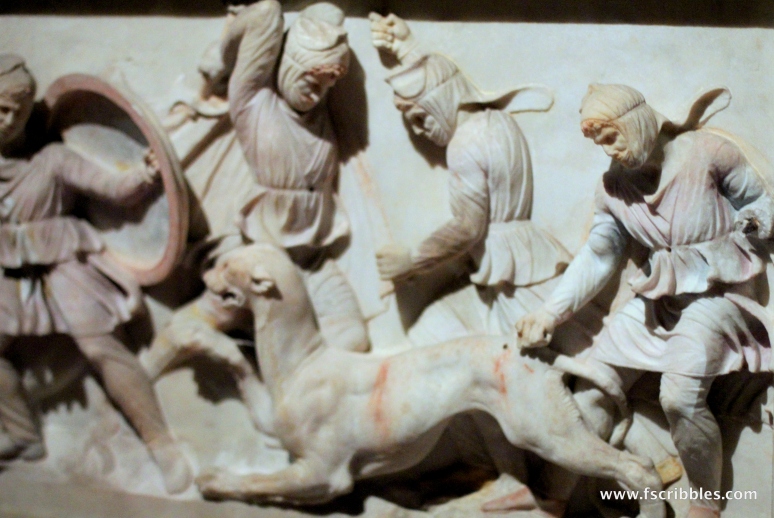Istanbul’s Archaeological Museums: don’t be overwhelmed!
I couldn’t decide which museums to visit when I went to Istanbul last year. I was torn between “I want to see ’em all!” and “but I don’t want to waste precious time on museums that aren’t worth it”. So I scheduled at least one museum visit a day and organized them according to opening days, visiting hours and by interest.
Here’s what you need to know about Istanbul’s Archaeological Museum(s). The museum is located just down the street from the Topkapi Palace but do not try to see both on the same day. It’s exhausting and too much to take in. The museum actually consists of three buildings: the Ancient Orient Museum, Istanbul Archaeological Museum (the largest building) and the Tiled Kiosk Museum. Admission is free for Turkish children and young adults and international visitors under the age of 12 (always have some sort of ID to present). For everyone else, it’s TL 10 (around $6). This museum is closed on Mondays and is generally open from 9 – 5, longer during the winter.
I was a little bored in the Ancient Orient Museum but there are two things you really must see (unfortunately, I don’t have good shots of them): Treaty of Kadesh and the Oldest Love Poem. The Treaty of Kadesh is the first written peace agreement between the Hittite Empire (look them up, I’ll wait) and Egypt in the 13 BCE. Despite promises of brotherhood, love and other hippie sentiments, I bet the peace didn’t last. The other artifact you want to make a beeline for is The Oldest Love Poem that dates back to the 18th BCE and is a hymn describing sacred marriage. If you take a moment to really think about that, it should make you feel warm and fuzzy inside. Yes? Please nod.
I then spent an hour wandering around the main Archaeological Museum. Do not be overwhelmed! I won’t tell anyone if you walk right past some displays. Please note that most of the museum is old, with terrible lighting which creates a surreal ambiance and ruins most pictures. Snap away though, just make sure you get the labels – otherwise you won’t know whose head you’re looking at the next day.
There are a few things you cannot miss here: Alexander Sarcophagus, Statue of Marsyas and the Serpent Column. I was fascinated by all the sarcophagi. They are mostly carved out of marble in bas-relief with unbelievable attention to detail and expression. The sarcophagi depict scenes from Greek mythology and legends. To me they were like scenes from a play, captured in a series of freeze frames.
The Alexander Sarcophagus does not belong to Alexander the Great, as one might think. It owes its name to the relief of Alexander but probably belongs to Abdalonymus, King of Sidon. It really is majestic; the work is impeccable. You could see every fold in the cloth, every muscle, every pained expression, every flared nostril.
Another beautiful one was the (mid 4 BCE) featuring 18 women carved in relief, grieving the loss of a loved one. It’s gives one an idea of how an ancient funeral processions would have looked. The building of the museum itself was inspired by these two sarcophagi.
 When you’re exhausted from traveling back in time and being in the heart of an old, dark museum, I suggest you sit outside in the sun for a bit. The courtyard is alright (I did not try the small café) with benches all around and plenty of friendly cats.
When you’re exhausted from traveling back in time and being in the heart of an old, dark museum, I suggest you sit outside in the sun for a bit. The courtyard is alright (I did not try the small café) with benches all around and plenty of friendly cats.
I don’t have any pictures from the Tiled Kiosk Museum and I was not impressed by it. At the time of my visit to Istanbul, I was working at museum in Kuwait that houses one of the most extensive Islamic art collections in the world. I was surrounded by Iznik pottery and tiles on a daily basis, some far more impressive than anything in that museum. Our curator once said, “if you’ve seen one [Iznik tiles], you have seen them all.” I breezed through this museum, without really registering much. If you’re not familiar with tiles from the 14th Century (and onwards), I would suggest that you spend 5 or 10 minutes exploring this museum. It’s really small and shouldn’t take you longer than that.
All in all, a trip to the Istanbul Archaeological Museum is necessary if you’re interested in history. I would not take young children there, as the museum is huge and old-fashioned without any interactive displays or activities for young visitors. The average visitor should be able to go through this museum fairly quickly and be done in less than 2 hours.






Oh my word, as an Archaeology and Classics major myself, I just want to say how much I HATE YOU!!!!!!!
HA HA, LOL I’M JUST JOKING. :) I do envy you though. I think with Turkey being the gateway to the East from the West and vice versa it has one of the most fascinating archaeological histories. I’m particularly interested in the Byzantine Empire. Remnants of Greco-Roman culture clash so beautifully with Islamic culture.
Awesome pics of those friezes by the way, you captured the details beautifully. :)
Ps. In under 2 hours? My friend, be very, very, very grateful I was not with you. We’d still be there now… :D